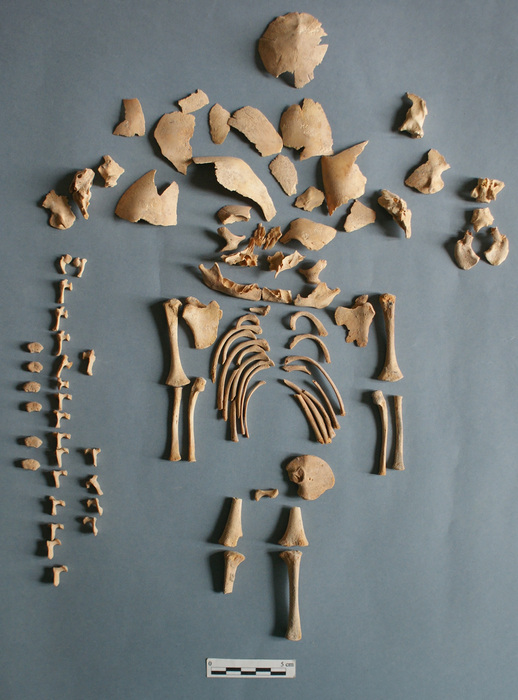Children with Down syndrome were
fully recognized as members of their communities already in prehistory
: this is demonstrated by
DNA analyzes
conducted on
ancient tombs
found in various European countries ranging from the Neolithic to the eighteenth century.
The findings are published in Nature Communications by the Max Planck Institute for Evolutionary Anthropology in Leipzig, Germany.
Scholars led by Adam Rohrlach examined
almost 10,000 genomes of ancient human skeletal remains
in search of individuals with an uncommon genetic structure, such as the presence of three copies of a chromosome instead of two (trisomy).
The analyzes made it possible to identify six subjects with an unusually high number of sequences on
chromosome 21
which could only be explained by the presence of a
trisomy
, the genetic condition that causes Down syndrome.
One case found in a church cemetery in Finland dates back to the
18th century
, while the other five are much older: they date back to
between 5,000 and 2,500 years ago
and were
found at Bronze Age sites
in Greece and Bulgaria and at Iron Age sites in Spain.
Study of the skeletal remains shows that all six individuals died at very young ages, with only one child reaching the first year of life.
The five prehistoric burials were all located within settlements and in some cases accompanied by particular objects such as
necklaces of colored pearls, bronze rings or shells
.
“These burials seem to show us that these individuals were cared for and recognized as part of their ancient societies,” Rohrlach says.
Although the study aimed to identify cases of Down syndrome, the researchers also discovered an individual who carries another genetic anomaly, the trisomy of chromosome 18 responsible for Edwards syndrome, which causes more serious consequences of Down syndrome.
The individual, buried at a Spanish Iron Age site, may represent the oldest case of
Edwards syndrome
discovered so far.
Reproduction reserved © Copyright ANSA

